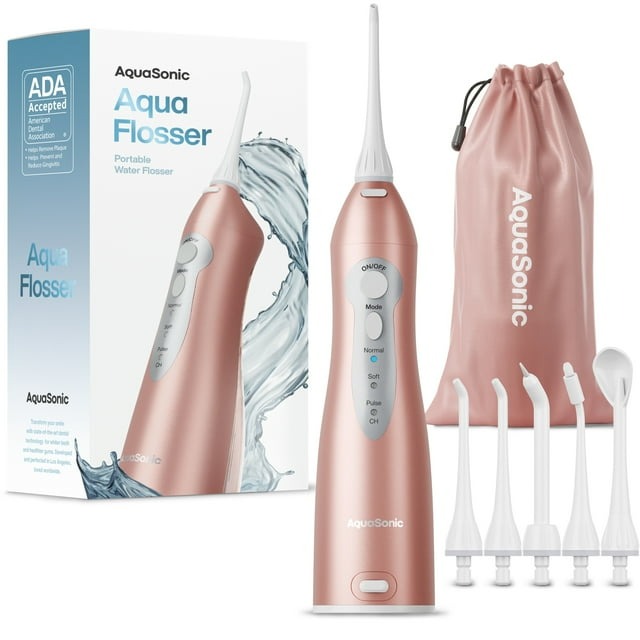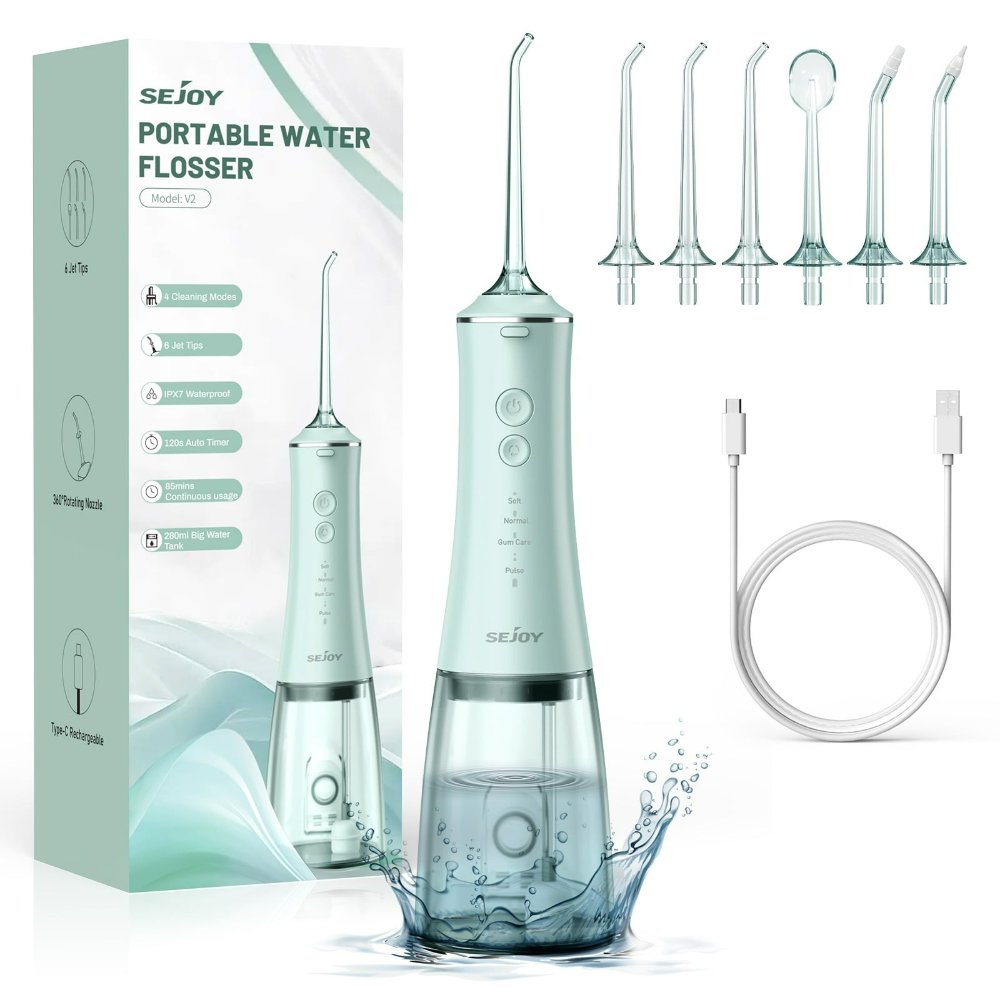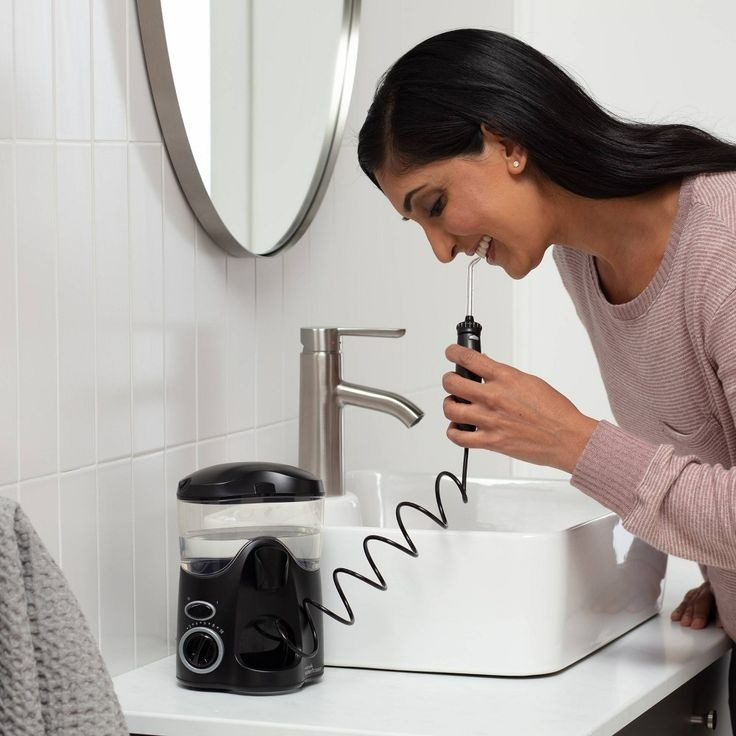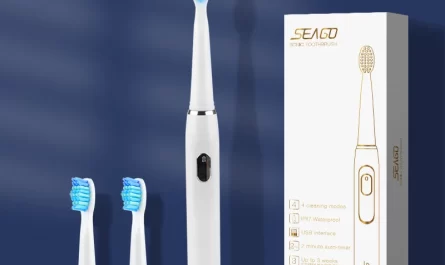What Is a Water Flosser and How Does It Work?
A water flosser is a dental cleaning device. It removes plaque and debris between teeth and below the gumline. The tool is handy for those who find string flossing challenging.
This device works by shooting a thin stream of water. The water pressure can be adjusted depending on your comfort level. As you guide the water jet along your gumline, it dislodges food particles. The process also massages and stimulates the gums, promoting better oral health.
Water flossers come with different tips and modes. Some are designed for general cleaning, while others focus on periodontal pockets or braces. Use the flosser at least once a day to maintain oral hygiene.
This tool requires water and access to power. Most models are easy to handle and store. They offer a convenient and effective way to boost dental care at home.
To use a water flosser, you fill the reservoir with water, select the tip and pressure setting. Point the tip at your gumline and move it along. The process takes only a minute. It reaches areas where traditional floss cannot, providing a deep clean feeling.

The Benefits of Using a Water Flosser for Oral Health
The use of a water flosser has several benefits for oral health. First, it effectively cleans places that are hard to reach with traditional floss. This can include the back teeth and areas underneath bridges or braces. With a water flosser, you can easily remove trapped food particles and reduce the risk of gingivitis, an inflammation of the gums.
Moreover, many users find that water flossing is gentle on the gums. Unlike string floss, which can sometimes cause bleeding or discomfort, a water flosser provides a consistent and controlled pressure. This is particularly beneficial for people with sensitive gums or those who are prone to irritation.
Regularly using a water flosser can also help to fight bad breath. By removing hidden food debris, the device aids in maintaining a cleaner mouth, which is key in controlling odor-causing bacteria.
Dentists often recommend water flossers for patients with periodontal disease. The device’s ability to flush out bacteria from deep periodontal pockets aids in the management of this condition.
Finally, water flossing can improve overall oral hygiene habits. People who find string flossing tedious might be more inclined to use a water flosser regularly. This can lead to more consistent oral care routines, contributing to healthier gums and teeth.
In conclusion, the benefits of using a water flosser for oral health are numerous. From greater cleaning efficiency to providing a gentle gum massage, water flossers can be a valuable addition to anyone’s dental care arsenal, especially when looking at the impressive ‘water flosser before and after’ results.

Comparing Water Flossing to Traditional Flossing Methods
When exploring oral hygiene, it’s important to evaluate the differences between water flossing and traditional flossing methods. Traditional flossing involves using a thin piece of string to clean between the teeth. It’s effective but requires good technique and dexterity. Some find it difficult, especially when working around braces or other dental work.
Water flossing, on the other hand, uses a stream of water to remove food particles and plaque. This method is less technique-sensitive and can be easier for those with limited mobility. Unlike string floss, water flossers reach below the gumline with ease. This can prove crucial in preventing gum disease and maintaining overall dental health.
In comparison, people may find water flossing more comfortable. There’s less risk of harming delicate gum tissue. For individuals with sensitive gums, this is a major plus. Water flossing also tends to be quicker once you are familiar with the device. As mentioned earlier, it can reach spots that are often missed by traditional flossing.
In terms of effectiveness, both methods aim to reduce plaque and prevent gum disease. However, studies suggest that water flossing can be more effective in reducing bleeding and gingivitis. It’s also noted to be beneficial for those with orthodontic appliances.
Still, traditional flossing has its merits. It’s portable, doesn’t require power or water, and can be done anywhere. For some, it remains a tried-and-true method. The key is consistency in whichever method you choose.
In conclusion, water flossing before and after results show it to be an effective alternative to string floss. While traditional floss has been the standard for years, water flossing offers a modern, often more comfortable approach to oral hygiene, particularly advantageous for those with special dental needs.
How to Incorporate a Water Flosser into Your Daily Routine
Incorporating a water flosser into your daily dental care routine can be simple and rewarding for your oral health. To begin, select a suitable time for flossing that fits well with your other daily activities. Most people find it easiest to use their water flosser after brushing their teeth in the morning or evening. Doing so provides a thorough clean and ensures you start or end your day with a fresh feeling.
Next, fill the device’s reservoir with lukewarm water, which can be more comfortable than cold water. Choose the appropriate tip for your needs, whether it’s a standard nozzle for general use or a specialized attachment for braces or periodontal pockets. Then, adjust the pressure setting to your comfort level. It’s generally best to start with a lower setting and increase it as needed.
When you’re ready to floss, lean over the sink and position the tip at a 90-degree angle to your gumline. Methodically move the tip along the gums, pausing briefly between teeth to allow the water jet to do its magic. Be sure to cover all areas, including behind your back teeth. This process shouldn’t take more than a minute or two.
After use, it’s a good idea to run clean water through the flosser for a few seconds to clean it out. Then, empty the reservoir and leave the flosser in an upright position to air dry. With this regime, your water flosser will become as much a part of your routine as brushing your teeth. And the ‘water flosser before and after’ results will be evidence of your commitment to oral health.
Remember, consistent use is key. By integrating a water flosser into your daily oral hygiene, you’ll be taking an important step towards healthier teeth and gums, and consequently, a brighter, more confident smile.

User Experiences and Testimonials
Real users often shed the best light on the effectiveness of a product. Testimonials from those who use a water flosser regularly provide insight into the ‘water flosser before and after’ experience. Here are some common points users often share about their journey with water flossing.
Many report a significant improvement in gum health. They see reduced bleeding and less gum soreness. People mention that their mouths feel cleaner throughout the day. They say water flossing makes their dental care routine more enjoyable.
Others point out the convenience factor. They love not having to deal with the mess of string floss. Users with braces or dental implants find water flossing a game-changer. It makes cleaning around these difficult areas much easier.
Some users were skeptical at first. Yet, after seeing the results, they became advocates for water flossing. They are happy with the reduced plaque buildup and the fresh feeling after each use.
A few testimonials highlight how the device helped with bad breath. By removing trapped food particles, the water flosser aids in keeping the mouth odor-free.
Users also appreciate the different settings and tips. They can customize their flossing experience to suit their needs. This personalization makes the tool effective for a variety of dental conditions.
To sum up, user experiences and testimonials often echo the benefits of water flossing. They provide real-world proof that adding a water flosser to your routine can lead to a healthier smile and improved oral hygiene.
Maintenance and Care for Your Water Flosser
To keep your water flosser running well, regular maintenance is a must. Here’s how to do it. First, empty the water reservoir after each use. This step prevents mold from growing. Next, wipe the outside of the flosser with a soft, damp cloth. This keeps it clean from dust and splashes. Don’t forget to clean the tips. Remove them after use and rinse under running water. If your model allows, soak the tips in a vinegar solution once a week. This will help remove any mineral build-up.
It’s also wise to replace the flosser tips every 3 to 6 months. Over time, they can wear out and become less effective. For those with filters, check and replace them as advised by the manufacturer. This ensures your water flosser functions at its best.
Finally, run through the cleaning cycle if your flosser has one. Usually, this is done by running a mixture of water and vinegar through the unit. It’s a simple step that keeps the inner workings clean. By following these maintenance tips, you’ll ensure your water flosser before and after use remains consistent and hygienic.
Professional Insights: Dentists’ Opinions on Water Flossing
Dentists have valuable opinions on the use of water flossers. They recognize the device’s ability to improve oral health. Dentists note that water flossers reach areas that traditional floss might miss. This makes them a strong ally in the fight against plaque and gum disease.
Many dental professionals see water flossing as a great option for patients with braces. It simplifies the cleaning around wires and brackets. Those with limited dexterity also benefit. Water flossing is easier than string flossing for people with arthritis or other hand mobility issues.
Some dentists emphasize the importance of using the tool correctly. They advise starting with a lower pressure setting. Gradually, one can move to higher settings as comfort increases. They also suggest that while water flossers are effective, they should not replace brushing. Both practices should go hand-in-hand for the best oral hygiene.
Dentists caution that not all water flossers are the same. They recommend choosing models with the American Dental Association (ADA) Seal of Acceptance. This ensures the product has been tested for safety and effectiveness.
Finally, dentists often share ‘water flosser before and after’ cases from their practice. These stories support the benefits seen in patient oral health. Reduced gum inflammation and healthier teeth are common outcomes. In summary, dentists support the inclusion of water flossers in dental care routines. They see them as beneficial tools for maintaining oral health.



